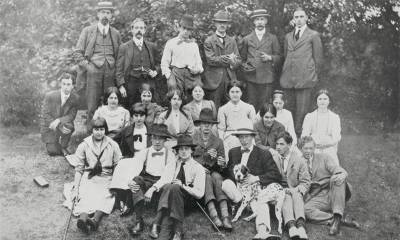Released Summer 2012.
Inside this issue
Featured
Image: The Slade Picnic, circa 1912, including Dora Carrington & Stanley Spencer (both front row).
The Yates Collection
Whilst most of the subject collections in UCL Libraries have names that are self explanatory e.g. FRENCH, GEOGRAPHY, there are a few exceptions and one of these is the YATES collection of material on classical archaeology. As Ancient World Studies Librarian, the YATES collection is in my subject portfolio and I thought I would take this opportunity to explain the origin of the name and what the collection actually contains.
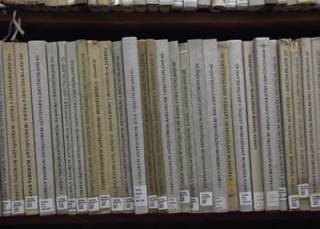
He died, childless, in 1871 and was buried at Highgate cemetery. In his will – an estate of about £2,000,000 at today’s values - he left numerous legacies to family members, friends and acquaintances as well as to learned institutions. The latter included an endowment (payable on the death of his wife which was not until 1884) for founding a new professorship of archaeology at UCL. Mrs Yates was not pleased to be only getting the income from her late husband’s investments whilst she lived and attempted to get the bequest to UCL annulled on the grounds that the proposed rules and regulations relating to the new Chair of Archaeology (which included the prohibition of tobacco and facial hair for the new professor) had not been completed by her late husband.
Special Collections holds papers and correspondence of Yates which includes sketches of archaeological material, and pressed foliage.
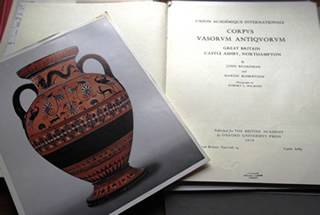
by Jes Cooban
A Rich Resource of Spanish Art
In 2011, the Library aided by David Davies, Emeritus Professor of History of Art, acquired a gift of over 300 volumes originating from the library of Enriqueta Harris, Art Historian and Curator of the photographic collection at the Warburg Institute from 1947 to 1970. Enriqueta studied at UCL in the 1920s and went on to become an authority on Spanish art, in particular on the works of Velázquez and Goya. She published several books on the subject and wrote many reviews for art journals, including the Burlington Magazine.
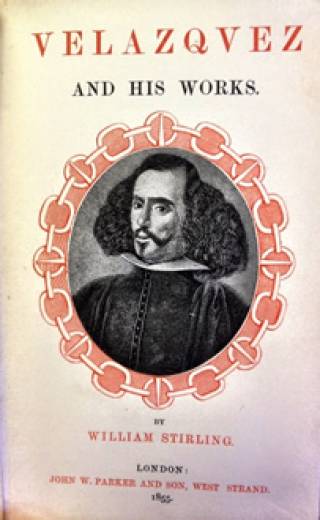
A major feature of the collection is its wealth of catalogues charting exhibitions of Spanish art across eleven countries, including nine locations in the UK, and ten in North America. These account for a third of the volumes. Catalogues of galleries with relevant holdings are also included, for example, Italian and Spanish paintings in the National Gallery of Scotland, A selection of Spanish masterworks from the Meadows Museum [Dallas] and the set of catalogues of drawings at the Prado Museum to name a few.
The cataloguing of the collection presented challenges, but in rather an unusual way. Enriqueta Harris appears to have been a very methodical person using the books almost like a filing cabinet. Many items contained enclosures, chiefly book reviews, articles, exhibition fliers, correspondence, typescripts and photos, all relating to the relevant books. In addition, several items carry significant annotations and bear witness to the owner’s habit of pencilling details of book reviews inside the back covers. Records for the collection can be found by searching for Enriqueta Harris gift in Explore; plans are underway to make the enclosures accessible.
by Andrew Watson
Spotlight on UCL School of Pharmacy Library
Based in Brunswick Square in the centre of Bloomsbury the Library has been at the centre of life at the School of Pharmacy since its foundation by the Royal Pharmaceutical Society in 1842. In the early years of its history the School shared its premises with the RPSGB in Bloomsbury Square, but moved to its present and purpose built home in the 1950s, with the “new” Library opening in November 1959 on the first floor. When the first department, Pharmaceutics, moved in construction work was still taking place and Professor Tony Evans, the Librarian at the time, remembers academic and technical staff working with kangos pounding above and below and pigeons flying through. Luckily this wasn’t an issue by the time the Library moved in! Today the School is spread over three sites, although all within a short walking distance of each other, and long distance learning is also catered for.
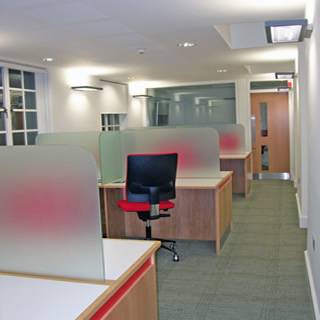
Whilst primarily serving the teaching and research needs of students and staff at the School this internationally known collection is also utilised by a variety of visitors and we very much welcome our UCL colleagues / customers from other sites. The Library has strong specialist collections in the pharmaceutical sciences, pharmacognosy and pharmacology but the biomedical sciences and other subjects are also covered. Also a small, but important archive, deals with the history of the School and pharmacy.
Even before the “new” Library opened the Library Advisory Committee in 1956 was warning that “the accommodation allocated to the Library was grossly inadequate” and by 1967 the need for additional space was being met by blocking some of the windows with shelves! As a result the Library has been extended and refurbished a number of times, not just because of increased customer numbers and stock, but also because of the changes to learning methods and the introduction of computing that we have all experienced. The last refurbishment, formally opened on 9th December 2009 by the then Vice-Chancellor of the University of London, is perhaps the most transformational with the space having been completely gutted (allowing for certain structural features such as the lifts) and then totally reconfigured and modernised. We were lucky to be funded by HEFCE CIF monies, a very generous donation from the Garfield Weston Foundation, a gift in the name of Dr LudwikSpirer and by alumni.
Having talked to our customers, benchmarking against the sector and visiting some inspirational libraries we provided a brief to our architects, Marcus Beale Architects, and our building contractors – both of whom did a fantastic job in the space and time available. The gutting and refurbishment of the Library had to happen during the Summer vacation and be ready for the start of the academic year in October, a deadline that was fortunately met. Admittedly, not without the odd panic after heating pipes in the ceiling burst!
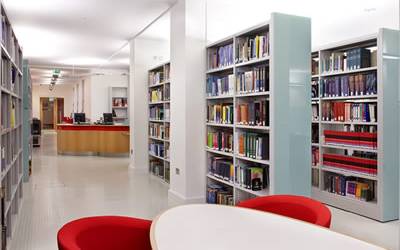
We now have zoned areas including individual quiet study spaces, group study pods and a study booth where students can rehearse presentations and Library staff can hold one-to-one or small group training sessions. We provide daily training on databases and EndNote and working closely with the academics we have been increasing information literacy in all the School student curriculums in face-to-face sessions and in the virtual world. Rearrangement and enlargement of the joint Enquiry and Issue Desk means we can now cope better with peaks in demand and have more suitable space for information consultations with customers, although we are always more than happy to visit researchers.
Noise had always been an issue for the Library, but with the use of zoning and acoustic materials, including a white noise machine there has been a dramatic decrease in this problem. The Library, like most of the School, has wireless but hardwired machines are also catered for and a follow-me printing/photocopying/scanning service has been installed (we have a photocopying mechanism in place for non-School visitors). All study spaces are now larger and this we have been able to achieve by thorough weeding of stock, off-site storage and utilising electronic alternatives to print where possible. An area with comfy chairs and a custom made table is located next to the current print journals, but highlighting the role of technology we also use this area to trial and obtain feedback on mobile devices, such as tablets and e-readers.
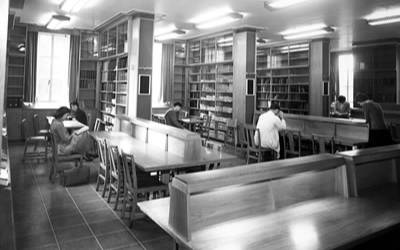
Feedback on the refurbished Library has been very positive and our access statistics went up over 30% in the first term and have stayed high. If anything, our customers have wanted more of the same, in particular quiet study spaces, which we think is due to the fact that the Library is really the only public part of the School to provide such an environment. Some of the improvements to the Library we were also able to repeat when the IT Unit on the second floor was refurbished in 2010.
A warm welcome and expert help awaits.
More information
- Visit the School of Pharmacy Library
by Michelle Wake, Chief Librarian & Head of Library and Information Services, UCL School of Pharmacy
Profile - Catherine Sharp, Ejournals Librarian
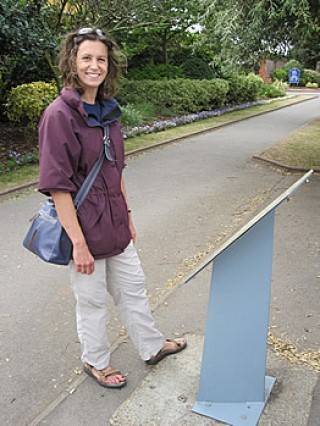
If you’re having difficulties with access to ejournals or one of our abstracting and indexing databases, and submit a problem report form, you’ll receive a reply from me or one of my colleagues. Finding a solution often involves quite a bit of detective work – checking entitlements, subscription records and linking syntax, as well as contacting publishers – but can be very satisfying.
We manage subscriptions of different value, ranging from single titles to huge deals for thousands of journals. At renewal time, we work with Subject Librarians to assess value for money, considering usage statistics and feedback from departments. We try to negotiate the best price possible, and to keep increasing subscription costs under control – a constant challenge. Eresource Managers in different institutions often cooperate to try to demand improved services from publishers, ranging from more accurate title lists to guarantees of archival rights in perpetuity, an important safeguard with e-only subscriptions.
At the start of the year we often find ourselves dealing with last-minute changes to publisher collections, especially where journals have moved publisher. We try to minimise access problems, but really appreciate feedback, especially when access isn’t working as it should be.
I also manage UCL’s Wellcome open access grant, which pays open access fees on behalf of authors funded by the Wellcome Trust. With high subscription costs and the government’s commitment to open access for publicly-funded research, we’re looking forward to developments in paid open access over the coming years.
by Catherine Sharp
 Close
Close


